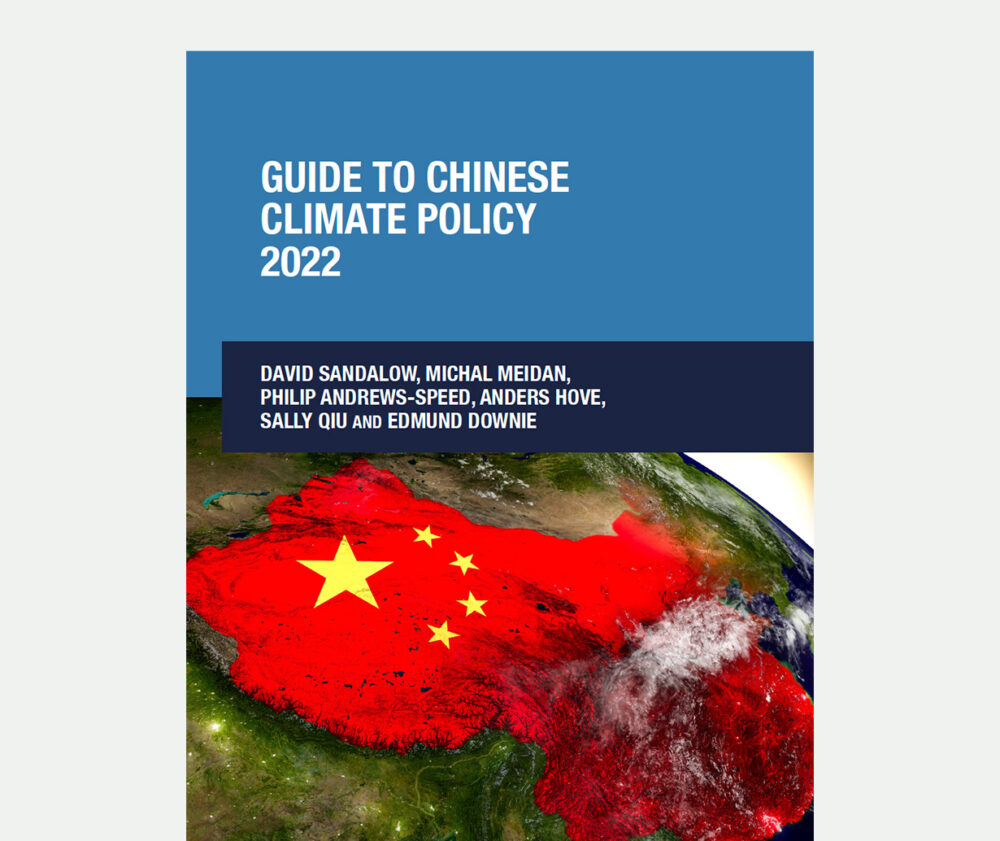The theme of green development has grown in prominence in the BRI since its early days. The Chinese government’s first major white paper on the BRI, released in late March 2015, uses the word “green” twice. The Guidance on Promoting Green Belt and Road, issued by NDRC, MOFCOM, the Ministry of Environmental Protection and Ministry of Foreign Affairs (MFA) in May 2017, “encourages” companies to use low-carbon and environmentally friendly processes, but includes neither implementation nor enforcement mechanisms.12 A major government white paper on the BRI issued in 2019 uses “green” thirty-one times and includes a “green road” section that says:
The Belt and Road Initiative pursues the vision of green development and a way of life and work that is green, low-carbon, circular and sustainable. The initiative is committed to strengthening cooperation on environmental protection and defusing environmental risks. It aims to build consensus on green development and increase mutual understanding and mutual support between governments, between enterprises and between peoples of the Belt and Road countries, to fulfill the 2030 Agenda for Sustainable Development.13
In the past several years, central government ministries have issued several guidelines on green development in outbound investment, including the 2021 Green Development Guidelines for Overseas Investment and Cooperation (“2021 Guidelines”), the 2022 Guidelines for Ecological and Environmental Protection of Foreign Investment Cooperation and Construction Projects (“2022 Guidelines”) and Opinions on Jointly Promoting Green Development of the Belt and Road (“2022 Opinions”).14 These have shown an evolution toward more stringent standards.15 The 2022 Guidelines state that:
advancing the promotion of green development in the BRI is an inherent requirement of implementing the concept of green development and advancing the construction of an ecological civilization. It is a major step for confronting climate change and protecting the ecological security of the globe.
The 2022 Guidelines “encourage” Chinese companies operating overseas to “use international principles and standards or higher Chinese standards” when “host country standards are absent or too lenient.”16 (Earlier guidelines only encouraged firms to “follow the environmental protection laws and regulations of host countries.”17)
The 2022 Opinions contain extensive discussion of sector-specific green development issues (for infrastructure, energy, transport, finance and more) and set general targets for green development in the coming decade. By 2025, there will be “solid progress” in “promoting the practical cooperation in fields including inter alia green infrastructure, green energy, green transport, and green finance”; by 2030, “a BRI green development pattern will have basically taken shape.” The 2022 Guidelines also state that “China will facilitate the full implementation of the United Nations Framework Convention on Climate Change (UNFCCC) and Paris Agreement among all parties.”
All three guidelines mentioned above are high-level policy documents. They serve as political signals about government priorities, particularly for state-owned entities––financiers, project developers and other contractors––who comprise much of the financing and implementation capacity for Chinese outbound investment in carbon-intensive sectors such as energy and transport. The guidelines are intended to shape the development of more specific regulations around topics such as investment approvals and monitoring, but do not themselves contain enforcement mechanisms.18
Prior to these guidelines, Chinese companies rarely faced serious consequences in practice for violating host country standards.19 Whether these new guidelines will lead to more focus on implementation and enforcement remains to be determined.
In a September 2021 speech to the UN General Assembly, President Xi Jinping’s pledged that China would “no longer build new coal power projects abroad.”20 The 2022 Opinions mentioned above offered an official elaboration:
China will stop building new coal-fired power projects abroad and prudently proceed with existing ones that are under construction. We will push forward the green and low-carbon development of overseas coal-fired power plants that have already been built. Relevant enterprises are encouraged to strengthen clean and efficient coal utilization, adopt advanced technologies such as efficient desulphurization, denitrification, dust removal, as well as carbon capture, utilization and storage, and upgrade energy-saving and environmental protection facilities. We will study and promote international cooperation on green and low-carbon development in steel and other industries. [Unofficial translation by the BRI International Green Development Coalition]21
Analysts have noted that these comments indicate an end to new projects but leave sizable gray areas such as the expansion of existing projects (see Section C).22
Several databases collect policy documents and statements related to green BRI issues:
- The China Carbon Neutrality Tracker, developed by Beijing-based consultancy Innovative Green Development Platform (iGDP), includes a database of major national and sub-national policy documents linked to climate issues.23
- The Climate Policy Databases, developed by the Climate Policy Lab at the Tufts University Fletcher School of Law and Diplomacy, includes databases around Chinese national climate policy as well as Chinese domestic and overseas investment policies.24
- The Green Finance and Development Center at the Fanhai International School of Finance at Fudan University maintains a database on major BRI policies and leadership statements.25
Several Chinese websites compile BRI-related news and analysis as well. These include the official Belt and Road Portal (yidaiyilu.gov.cn), the BRI Environmental Big Data Portal (greenbr.org.cn) and the Chinese Academy of Social Sciences’ Belt and Road Database (ydylcn.com).
References

